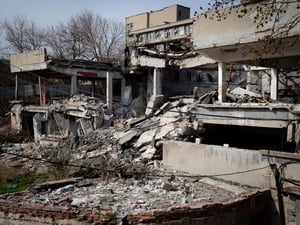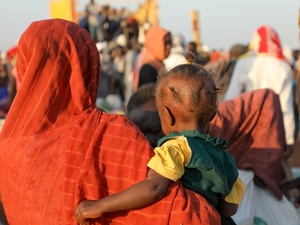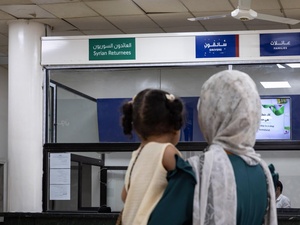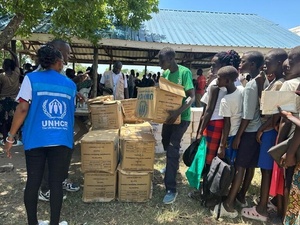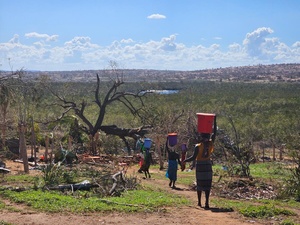Myanmar quake piles fresh suffering on families fleeing conflict
Myanmar quake piles fresh suffering on families fleeing conflict
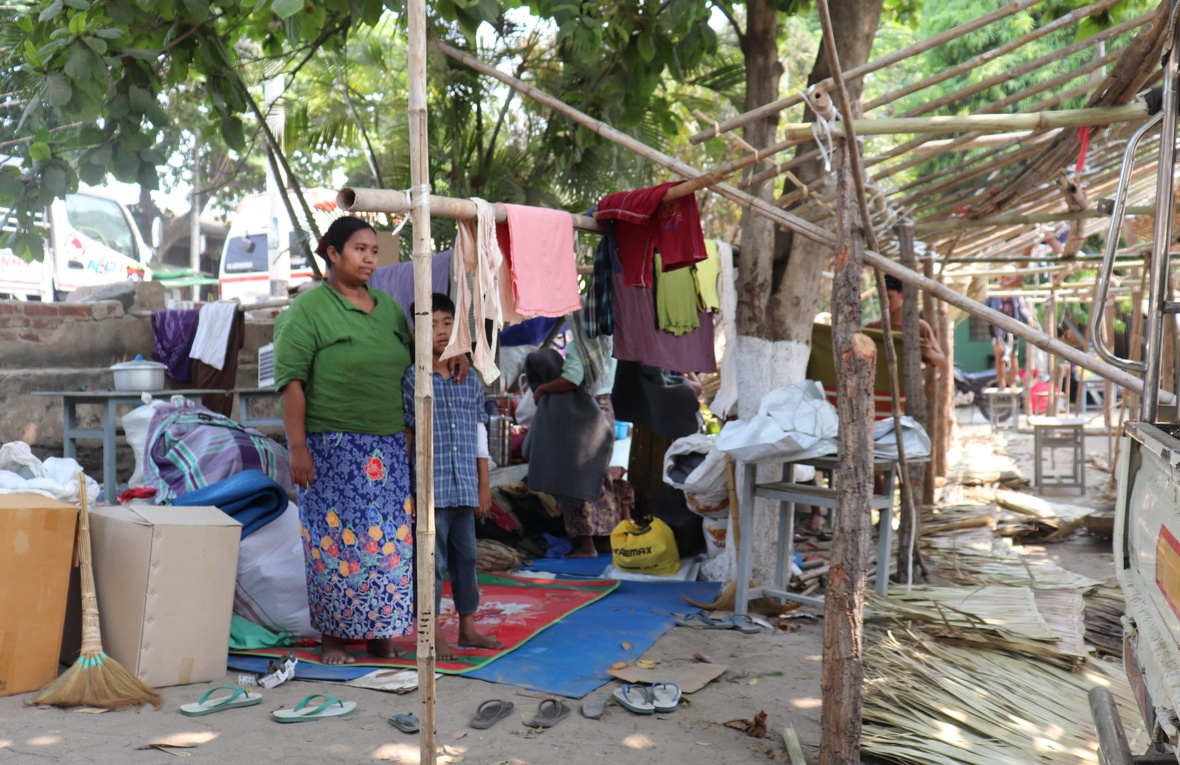
U Than Win's youngest daughter and injured grandson stand in the school compound where the family is staying after their home was destroyed in the earthquake.
Two years ago, U Than Win and his family lost everything and had to flee for their lives when fighting linked to the conflict that has gripped Myanmar for more than four years erupted in their hometown, 100 kilometres from Mandalay.
“Both sides were firing, so all the people had to flee. All our belongings were taken, and the remaining houses were burned down,” the 68-year-old farmer said. “Many people have died … We can’t go back to our town. I don’t have a house, and everything is destroyed.”
With no other option, Than Win and his extended family of 15 – including his elderly mother, daughters and grandchildren – headed to Mandalay in search of safety and a chance to rebuild their lives. They are among 3.6 million people who remain displaced inside Myanmar after fleeing their homes during the long-running conflict.
Back to square one
After two years, the family was finally finding its feet again. Than Win sold vegetables in a local market while his daughters worked as sales assistants at a clothing store, earning enough to keep them fed and pay the rent on a makeshift bamboo hut built beside their landlord’s house in a modest neighbourhood of the city.
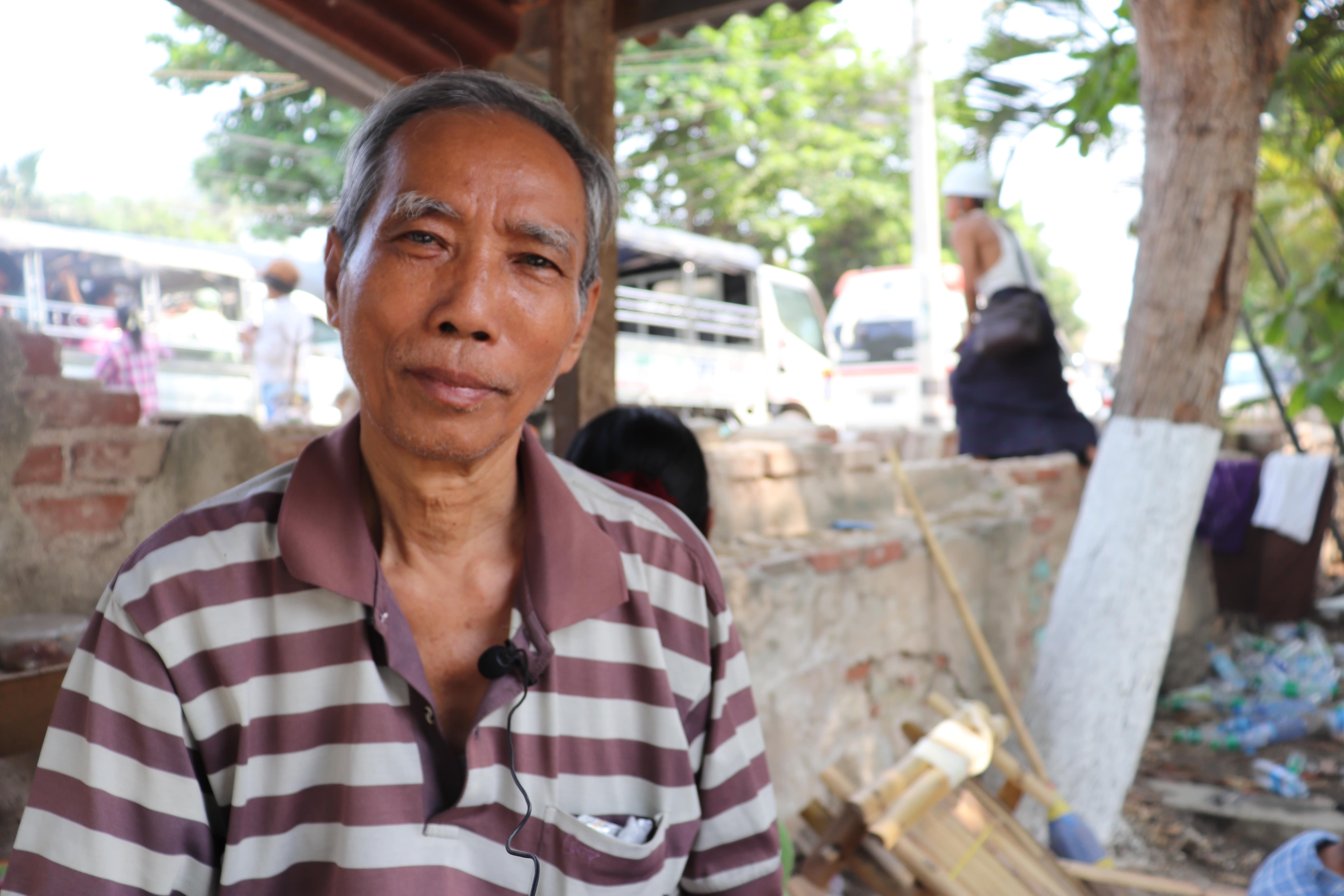
U Than Win, 68, sits in the shade in the school yard where he and his family found shelter after the earthquake.
But their lives were thrown into chaos once more on 28 March, when a 7.7-magnitude earthquake struck Myanmar with its epicentre near Mandalay, the country’s second largest city, killing thousands and causing widespread destruction.
As the first tremors struck, in their panic one of Than Win’s grandsons fell into the hut’s cooking fire and was badly burned. As he carried the boy to safety, Than Win was struck by falling debris as his landlord’s building and other neighbouring houses collapsed around them.
“Our lives were just getting better,” Than Win said. “Now the earthquake … has made me flee again.”
“Right now, everyone is suffering [but] among those affected, we are the worst,” he continued. “As displaced people, our troubles are doubled. We have nowhere to live and nothing to live on.”
More help needed
With all the local monasteries filled with others displaced by the disaster, Than Win and his family are currently living under a tree in the grounds of a local school. UNHCR, the UN Refugee Agency, has provided them with a tarpaulin for shelter and sleeping mats, while the World Food Programme has donated rice and cooking oil.
“We have to sleep on a cement floor. The weather is very hot … and our health is deteriorating,” Than Win said. The conditions are especially hard for his 89-year-old mother and the other older members of the family, he added. “It's too hot during the day, so we all huddle together in a shady place. At night, we go to another place to sleep. As elderly people, we can't endure that kind of suffering for long.”
In the immediate aftermath of the earthquake, UNHCR rushed emergency supplies from its existing stocks to help around 25,000 of the worst-affected survivors. The agency is mobilizing further aid from its warehouses in the country to support an additional 25,000 people, but stocks need to be urgently replenished to meet the massive needs of people affected by the earthquake and years of conflict.
On Friday, UNHCR launched an appeal for $16 million to provide emergency aid, manage displacement sites, and provide protection services for 1.2 million people in Myanmar until the end of the year.
“The earthquake has compounded challenges for those families who have already been displaced,” explained Eliza Stephen, UNHCR’s team leader for the Mandalay field unit. “Families have lost their shelters, their loved ones and also their sense of security. They urgently need our support.”



